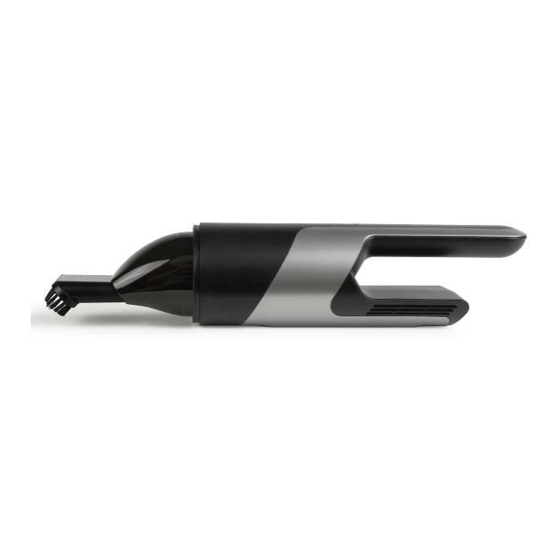
Subscribe to Our Youtube Channel
Summary of Contents for Livoo DOH128
- Page 1 Instruction manual Hand vaccum cleaner Reference: DOH128 Version: Language: English WWW.LIVOO.FR...
- Page 2 Instruction manual You have purchased a product LIVOO brand and we thank you. We take great care in design, ergonomics and ease of use of our products. We hope that this product will give you complete satisfaction. This instruction manual is available too on our website www.livoo.fr...
- Page 3 Instruction manual • Do not attempt to replace the batteries yourself. Do not disassemble the unit. TECHNICAL INFORMATIONS Battery capacity: 2000mah/7.4V Motor Power: 80W Input: 5V 1.5A Charging time: 2.5h Working time: 13-15min Dust bin: 120ml DESCRIPTION...
- Page 4 Instruction manual How to charge: Before using for the first time, please charge it fully. 1. Connect the cleaner with charging cable 2. Charge with USB car charger or USB home charger, you can also connect it into car cigarette lighter with an usb adapter(not included) 3.
- Page 5 Instruction manual Note : do not use detergent to clean the filter, just cool water. Procedure to observe for battery’s end of life The appliance batteries must be removed before discarding the equipment. Please follow the procedure below: Ensure that your appliance is disconnected so as to reduce any risk of electrical shock. Discharge the batteries fully.
- Page 6 Instruction manual Correct Disposal of this product (Waste Electrical & Electronic Equipment) (Applicable in the European Union and other European countries with separate collection systems) The European Directive 2012/19/EU on Waste Facilities Electrical and Electronic (WEEE) This marking shown on the product or its literature, indicates that it should not be disposed with other household wastes at the end of its working life.

















Need help?
Do you have a question about the DOH128 and is the answer not in the manual?
Questions and answers